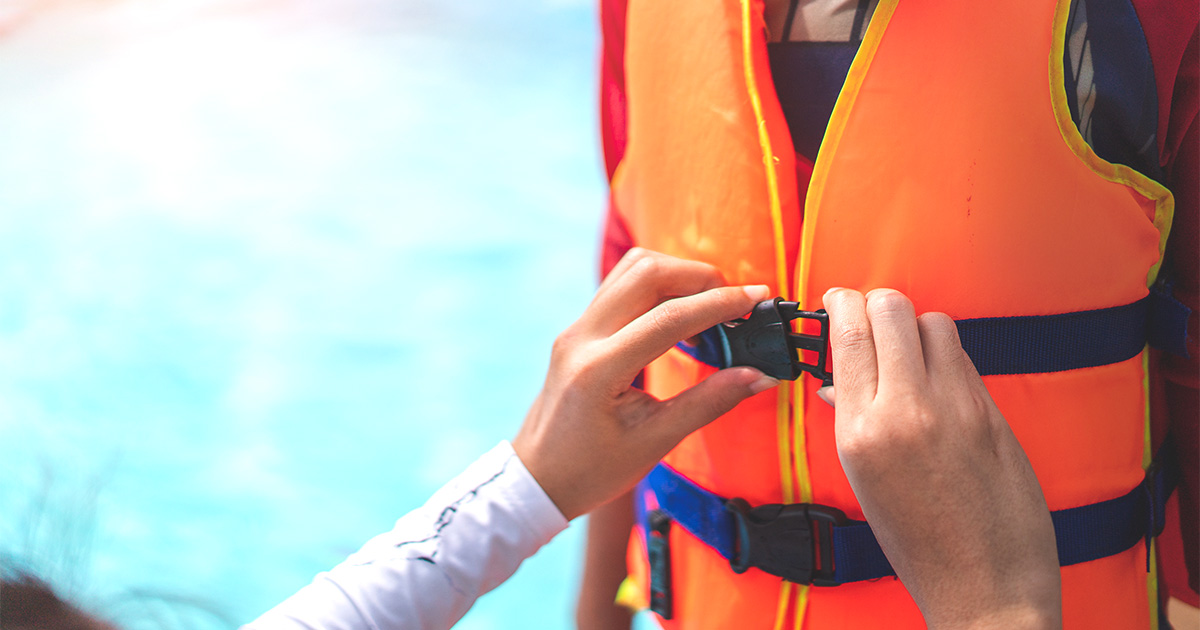
Summer is the playful season of splash pads, beach days, pool parties, and impromptu backyard water balloon fights. Water play is part of what makes childhood extra magical, but it also comes with serious risks, including drowning. It can happen quickly and silently, making it one of the leading causes of death between the ages of 1 and 4. Prevention is key. There are several things you can do to make being around water a safe and fun experience for our kids, whether you’re at a local pool or visiting family on a lake.
Water Safety Tips
These five recommendations are from trusted guidance provided by the American Academy of Pediatrics (AAP) and HealthyChildren.org. They were also reviewed by Dr. Seth Scholer, a Professor of Pediatrics at Vanderbilt University Medical Center and an active member of our LCG Education Advisory Board. Stay safe by being mindful of some of the most common risks:
- Watch Closely: Supervision is Everything
“Watch your child” sounds simple, but it’s more than just glancing up every so often while chatting with other adults. Active supervision means you’re close enough to reach your child quickly, especially around pools, lakes, and bathtubs. The AAP recommends designating a Water Watcher. This is an adult whose only job is to keep eyes on the water, with no distractions, for a set time. Rotate this role during gatherings so that everyone gets a break. And, yes, this still applies even when lifeguards are present.
- Pool Safety: Lock It Up, Check It Twice
If you have a pool or visit someone who does, take a moment to check for safety features. The AAP recommends fencing that completely separates the pool from the house and yard with a self-latching gate. Keep rescue gear nearby and make sure pool covers are secure and not collecting water on top. Small inflatable or portable pools should be emptied and turned upside down when not in use. Even just a few inches of water can cause drowning.
- Plan Accordingly: Lakes, Rivers, and Vacations
Natural bodies of water add another layer of unpredictability. Uneven surfaces, murky water, and changing currents all increase the risk. Kids should wear U.S. Coast Guard-approved life jackets, not water wings or pool noodles, when near lakes, rivers, or oceans. Do not rely on older siblings to supervise younger children. Even strong swimmers can be caught off guard by cold water shock, rip tides, or hidden drop-offs. If you are staying at a vacation rental, do a quick walk-through and identify any potential water hazards to be aware of, including ponds or fountains.
- Backyard Play: Don’t Overlook the Small Stuff
Sprinklers, splash pads, and even buckets of water can be more dangerous than they seem. For infants and toddlers, especially, any standing water should be dumped out right away when not in use. Walkways around wet areas can be slippery, so water shoes with grips are a smart purchase. While it’s tempting to let kids play while you step away to prep lunch or grab towels, always have a backup adult watching if you can’t take the kids inside.
- Swim Lessons: Helpful, But Not a GuaranteeSwimming lessons are one of the best ways to build water confidence and safety, but it’s important to remember they’re not a replacement for supervision. The AAP encourages lessons starting around age 1, depending on the child’s development and comfort level. Still, even experienced swimmers can get tired, stuck, or panicked. Keep your eyes on all children regardless of their age or skill level.
Final Thoughts
Water safety isn’t about fear. It’s about confidence, preparation, and knowing how to set boundaries while still letting your kids enjoy the water safely. Before you dive into summer fun, talk with your children about what to expect, what rules matter the most, and why. For more tips, visit HealthyChildren.org, the official parenting site of the American Academy of Pediatrics.
